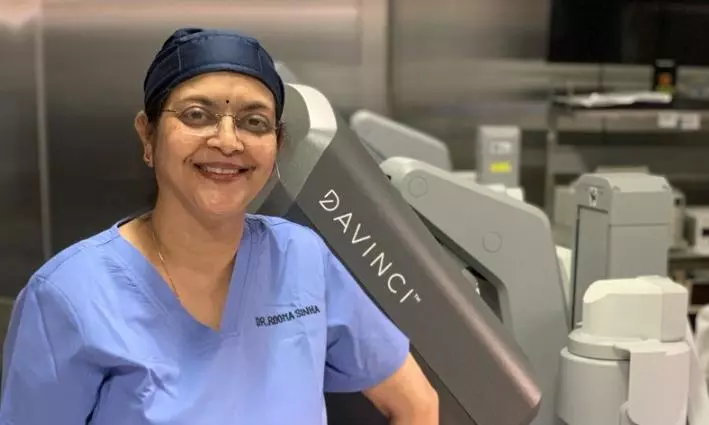Changing Face Of Surgery
Laparoscopic and robotic surgery are the future of gynaecology. Dr Rooma Sinha makes sure more women in India benefit from it as it establishes foothold at present

Gynaecological surgery is associated with major incisions, extended hospital stays, and long recovery periods; but Dr Rooma Sinha, a senior consultant in gynaecology and robotic surgery at Apollo Hospitals, Jubilee Hills, is changing all of that.
“I grew up seeing women suffer through surgery. A huge cut was considered normal. But once I was exposed to laparoscopic surgery, I realised there was a better way to do things,” says Dr Sinha, who has over 25 years of experience in the field. One of India’s early adopters of minimally invasive gynaecological surgery, she was among the first to introduce robotic-assisted procedures in the field. Her approach is pragmatic: “Smaller wounds. Less pain. Better outcomes. That should be our baseline.”
Despite strong evidence supporting minimally invasive techniques, Dr Sinha says open surgery still dominates in many hospitals, especially in public health settings. “This could be due to a lack of training, infrastructure, or even mindset. Open surgery is familiar, but that doesn’t mean it’s ideal,” she says. “There’s a clear shift in the West towards minimally invasive gynaecological surgery. India is catching up, but too slowly.”
Her mission is to normalise advanced laparoscopic and robotic options, not just as ‘specialised’ care but as the standard of care. “Why should a woman have to lose blood unnecessarily or stay hospitalised for a week when the same surgery can be done through a keyhole?”
For Dr Sinha, it’s about more than smaller incisions, it’s about better healing. “The uterus is the core of a woman’s body. Any surgery on it should be approached with utmost respect for recovery. A woman has to return to her family, her job, her life. We have to keep that in mind.”
Over the years, the gynaecologist has performed thousands of procedures, ranging from hysterectomies and endometriosis excisions to pelvic organ prolapse corrections and early-stage cancer surgeries. She is particularly known for her use of the da Vinci surgical system, which allows for enhanced visualisation and precision in complex cases.
But she’s quick to point out that technology is only as good as the surgeon using it. “The robot doesn’t replace your judgment. It refines it. You have to know when to act, and when to hold back.”
Yet, access remains uneven. “Yes, it is expensive. That’s a challenge. But even basic laparoscopy can drastically reduce suffering. We need public hospitals to start investing in this. And we need more surgeons to be trained, especially women,” the doctor asserts.
Her clinical insights are backed by her ability to listen to women, who are often rushed through the system or their views dismissed. “Women with endometriosis, adenomyosis and fibroids are told to tolerate the pain. Sometimes for years. That’s unacceptable,” she states firmly.

